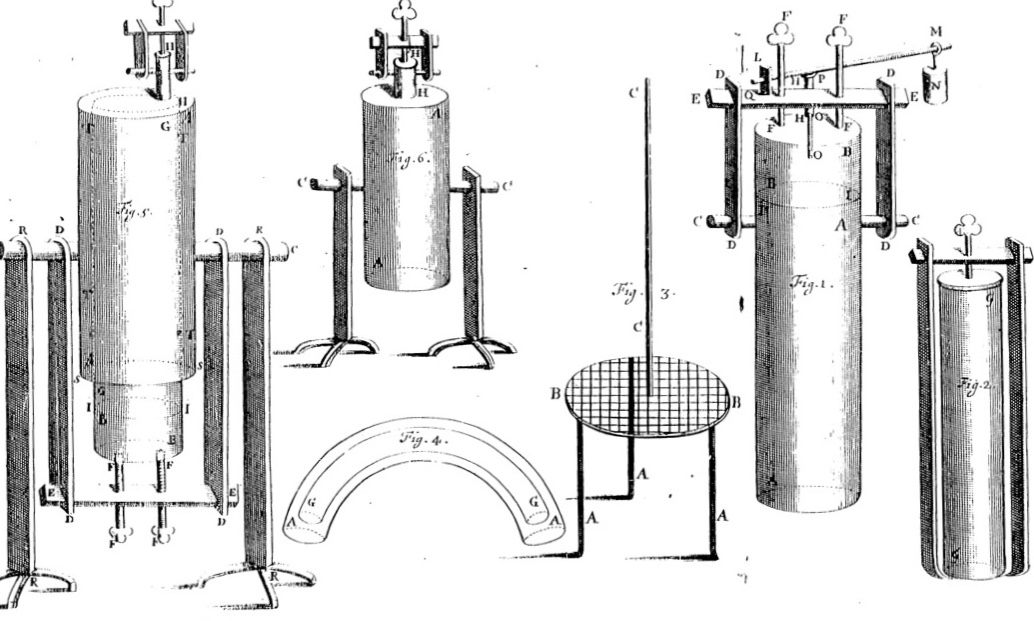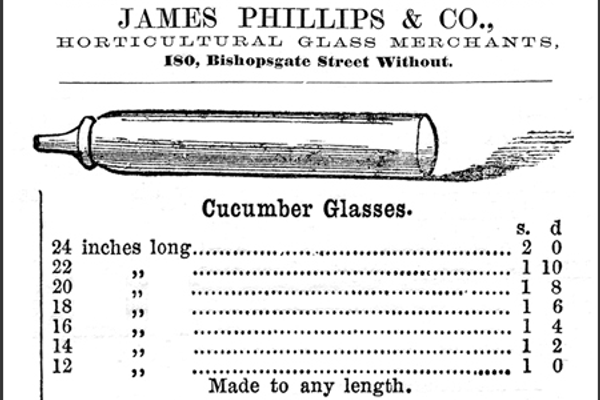The Instant Pot of the 1600s Was Known as ‘the Digester of Bones’
The pressure cooker led directly to the invention of the steam engine.

From a strictly culinary perspective, food historians will likely remember 2017 as the year of the Instant Pot. The device started the year as a hip-but-obscure cousin to the Crock-Pot and ended it as the central relic in a home-cooking cult. Buoyed by its emergence as the star item of last year’s Prime Day sale, the device also conquered 2017’s Black Friday bonanza. According to the NPD Group, sales for multi-cookers rose 79 percent by the end of December 2017, exceeding $300 million.
For chefs and other experienced cooks, the Instant Pot’s meteoric rise was welcome, if not humorous. While new converts marveled at what emerged from their gadget, veterans saw the Instant Pot for what it truly was: an electronic pressure cooker—a small but notable improvement over a stovetop technology that’s had a place in restaurants and kitchens since the early 20th century. As food journalist Nick Kindelsperger put it in the Chicago Tribune: “The greatest trick the Instant Pot played on people was convincing them that they were trying something new. Pressure cookers, slow cookers, rice cookers, steamers—these are appliances that have been around for years.”
Just how many years it’s been around is surprising. While industrial limitations precluded the mass production of pressure cookers until the early 1930s, the technology itself dates to a late-17th-century device with a name fit for an early Metallica record: The Digester of Bones.
Invented by the Frenchman Denis Papin in 1679, the Digester resulted from landmark experiments involving the utility and power of steam. The ramifications transcended the kitchen: Working with the same basic science that underpins the Instant Pot, Papin’s first pressure cooker also played a significant role in the development of the steam engine—a world-changing device that launched the Industrial Revolution. How this happened is a story of innovation, collaboration, and Papin’s long-forgotten legacy.
Little is known of Papin’s childhood. Born on August 22, 1647, in Blois, France, he studied medicine at the University of Angers between 1661 and 1662, and likely earned his doctorate at the same institution in 1669. He moved to Paris soon after, where he met and befriended Christiaan Huygens, the famous Dutch polymath. Throughout the early 1670s, the pair conducted experiments on an air pump. After publishing the results of these tests in 1674, Papin moved on to England, where he launched a similar project with the chemist Robert Boyle at the Royal Society of London.

During this period, Papin started work on his first pressure cooker. Inspired by his vacuum-based experiments with Huygens, he began to measure and harness the power of compressed steam. By 1678, he’d realized this science’s potential culinary application, a direction that initially embarrassed him. In the preface to his first book on the subject, A new Digester or Engine for softening Bones (1681), Papin all but apologized for his pursuit before making an impassioned argument for its necessity. “Cookery is such an ancient Art,” he wrote, “The use thereof is so general and so frequent, and people have been so earnest upon the improving of it, that it seems if any could be brought to perfection, this should be it.”
By 1679, Papin had completed a working model, which he referred to as “the bone digester”—so named because it not only cooked food, but also softened bones for the production of fertilizer. According to David Wootton, author of The Invention of Science: A New History of the Scientific Revolution, the Digester was nothing short of a revelation. A breakthrough in steam technology, it relied on simple but impactful science. “Making the Digester involved understanding that pressure relates to the temperature at which things boil,” he says. “And when things boil, the result is pressure from steam. You’ve got a double process when you put something in a pressure cooker: You’re raising the temperature at which steam emerges, and you’re also producing pressure from the steam.”
Papin’s initial device required a custom-built furnace, which rested directly beneath a series of hollow cylinders—two made from brass, one from glass or pewter. Users placed food and water within the latter. The top of the device was sealed with a lid and kept taught with screws. Most notably, the device featured a safety valve with a weight on its end. When pressure reached unsafe levels, the weight lowered the valve and released excess steam, thereby preventing explosions.
Though bigger than the devices it later inspired, the Digester was strikingly similar to modern pressure cookers both in its basic components and its efficiency. “The principals are exactly the same,” Wootton says. “You’re cooking faster because you’re cooking at a higher temperature, and because you are doing it in steam, you’re not going to burn or dry things out. You’re also releasing marrow while cooking animal substances until you can produce various sorts of broths and jellies.”

Papin first presented the Digester to the Royal Society in 1679. The device greatly impressed his peers, a group that included the likes of Isaac Newton, Robert Hooke, and Antonie van Leeuwenhoek. In 1681, the Society commissioned Papin’s first book: a treatise that simultaneously served as a construction guide, an experiment log, and a cookbook. In it, he detailed his success in cooking mutton, beef, lamb, rabbits, pigeons, and various jellies made from fruit and animal byproducts.
A year after the book’s release, Papin put his Digester to the ultimate test. On April 12, 1682, he used it to prepare an elaborate meal for the Royal Society. Member John Evelyn recorded the experience in his diary. Like many of today’s Instant Pot fanatics, he quickly became enamored with the quality of pressure-cooked food. “The hardest bones of beef itself, and mutton, were made as soft as cheese,” he wrote, “Without water or other liquor, and with less than eight ounces of coals, producing an incredible quantity of gravy; and for close of all, a jelly made of the bones of beef, the best for clearness and good relish, and the most delicious that I had ever seen, or tasted.”
Evelyn’s account suggests that by the end of the evening, Papin had wowed a group that prided itself on impartiality. “This philosophical supper,” he wrote, “Caused much mirth among us, and exceedingly pleased all the company. I sent a glass of the jelly to my wife, to the reproach of all that the ladies ever made of their best hartshorn.”
As the Royal Society celebrated his new invention, Papin soon realized the device might have wider applications. Because early pressure cookers sometimes exploded, he continued to refine the revolutionary safety valve—a component he mastered in his final version of the Digester in the late 1680s. While watching this valve operate, he noted how the steam in his device created an immense upward thrust. “What you’ve got there is a steam boiler,” Wootton says. “All you need do is attach that to a piston and you’ve begun to produce a steam engine.”
After publishing his second book on the Digester in 1687, Papin fully pursued this end. Within months, he realized his pressure cooker made for the ideal prime mover in a piston-based engine. About this time, he relocated to Leipzig, Germany. He spent the next few years there developing his device, which he eventually detailed in the September 1688 and June 1690 editions of the scientific journal Acta Eruditorum.

As described by the 19th-century engineer Robert Thurston, Papin powered his engine with a cylinder similar to his pressure cooker, which he attached to a piston connected to a cord over two pulleys. He filled this cylinder with a “small quantity” of water and lit a fire beneath it. The resultant steam drove the piston upward, where a latch held it in place. He then removed the fire, causing the steam to condense and form a vacuum. This pulled the piston downward, which engaged the rope over the pulleys. The device could lift 60 pounds once a minute, but Papin believed a larger machine could raise as much as 8,000 pounds four feet per minute.
This device was nearly identical to later engines that fueled the Industrial Revolution. Unfortunately, Papin soon abandoned his scheme after becoming distracted by a piston-free engine patented by Thomas Savery in 1698. “Papin,” Thurston wrote in 1878, “having earned the honor of having invented the first steam-engine of the typical form which has since become so universally applied, forfeited that credit by his evident ignorance of its superiority over existing devices.”
Papin died in 1713. One year prior, an English inventor named Thomas Newcomen introduced the machine now credited as the first practical steam engine. According to Wootton, the timing is suspicious. “Newcomen is not an educated or sophisticated scientist,” he says, “And yet when he comes to build his steam engine, he seems to know exactly what to do, and he knows better what to do than quite highly sophisticated people who ought to understand the principals better. So, the question is, how does Newcomen know what to do?”
Wootton believes Newcomen built his device after referencing Papin’s articles on steam engines, as well as The New Continuation of the Digester of Bones. If that’s true, this twist is more than food for thought for Instant Pot users the next time they make four-minute oatmeal—it also radically rewrites long-accepted history. “If Newcomen gets his thinking about how to tackle a steam engine entirely from Papin,” he says, “Then Papin is the inventor of the steam engine, and Newcomen is a brilliant technician who puts Papin’s thinking into practice.”
Gastro Obscura covers the world’s most wondrous food and drink.
Sign up for our email, delivered twice a week.

























Follow us on Twitter to get the latest on the world's hidden wonders.
Like us on Facebook to get the latest on the world's hidden wonders.
Follow us on Twitter Like us on Facebook